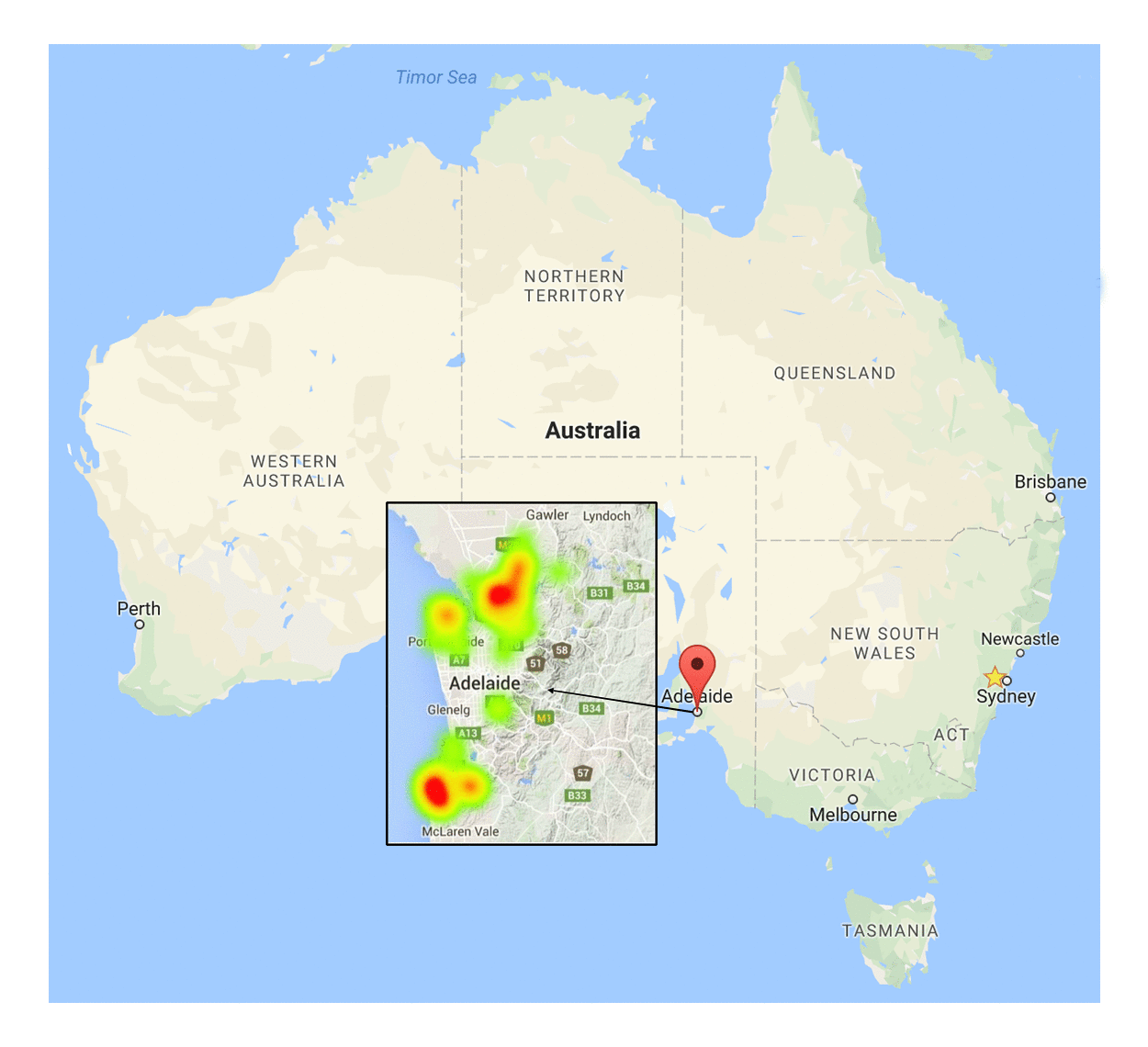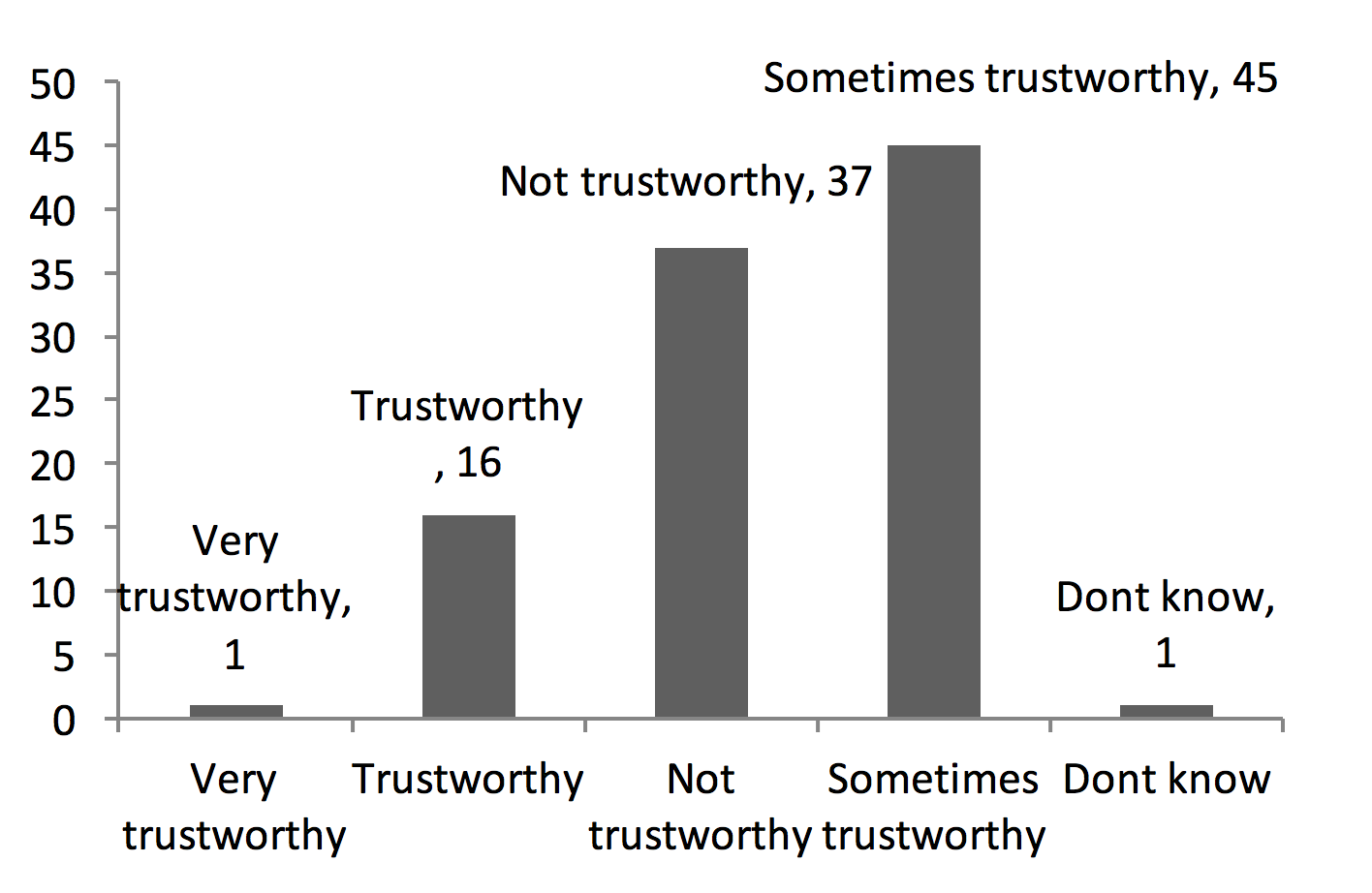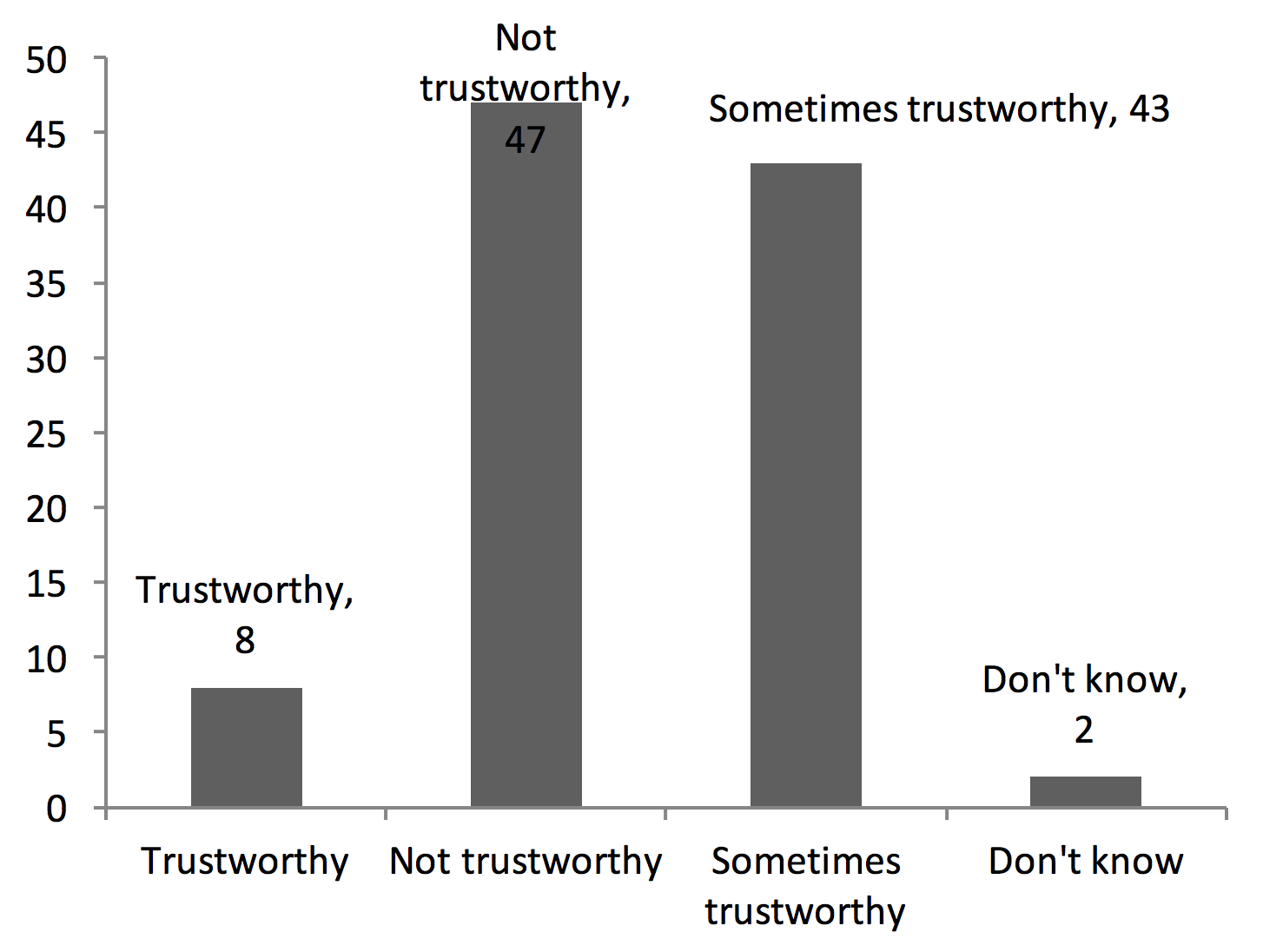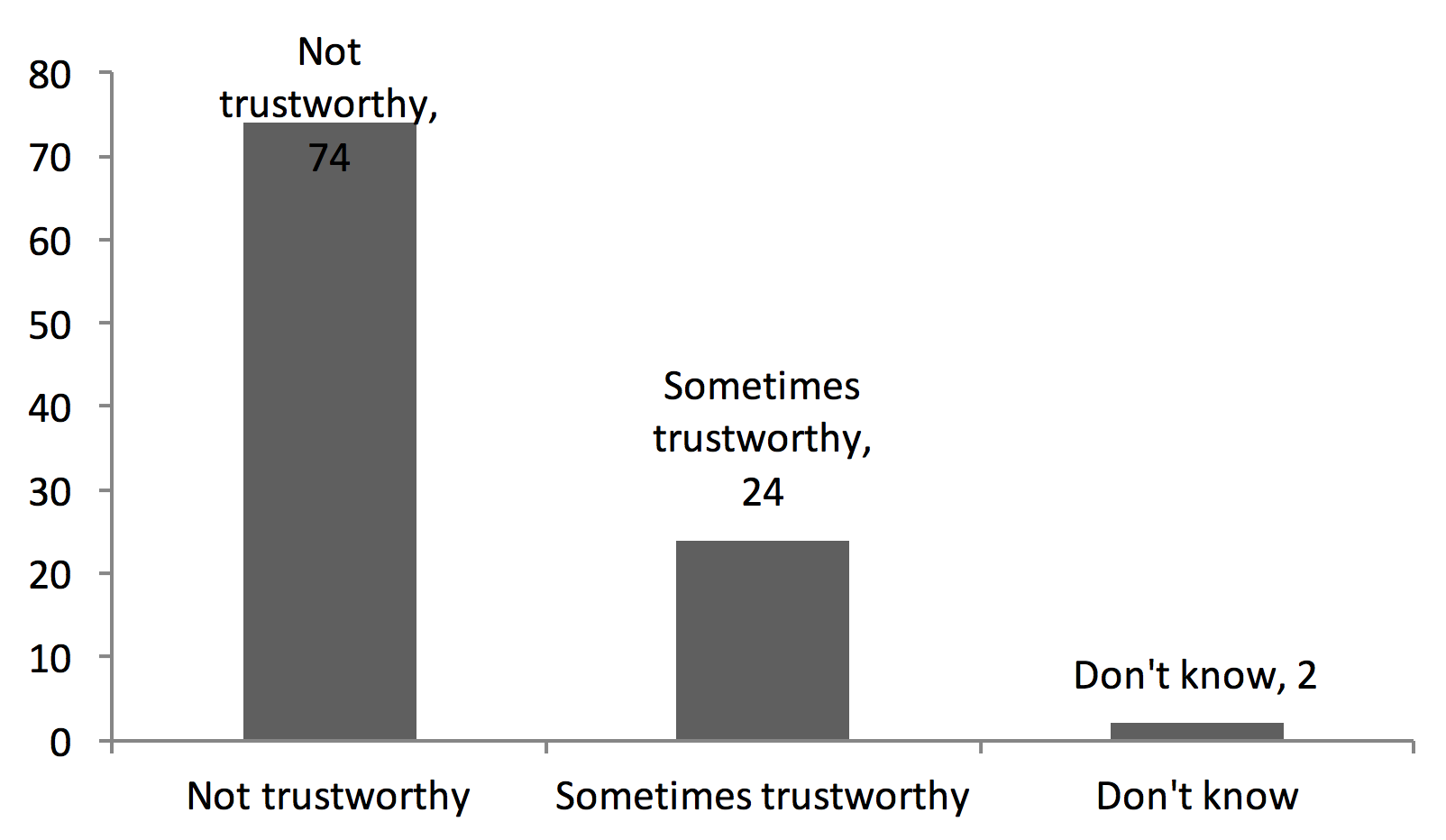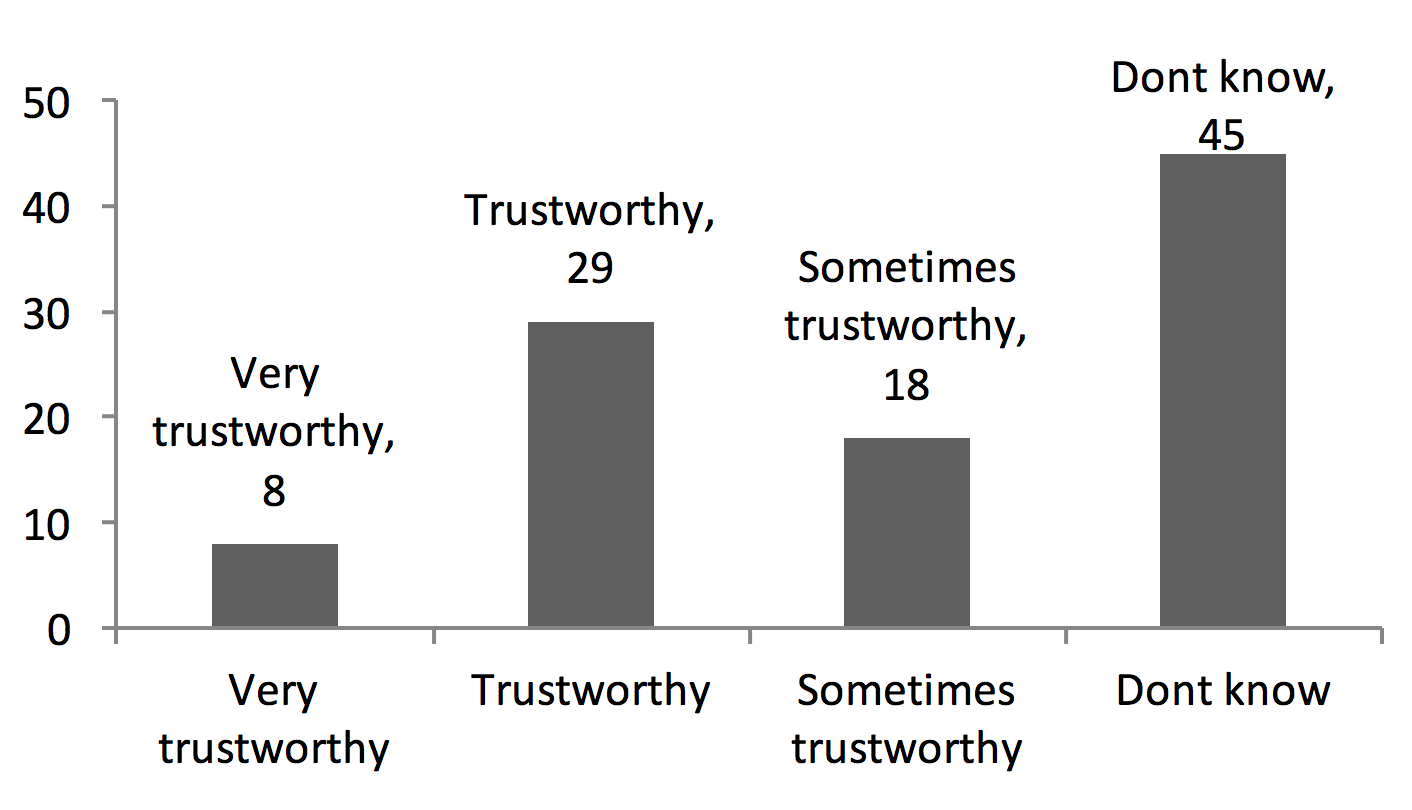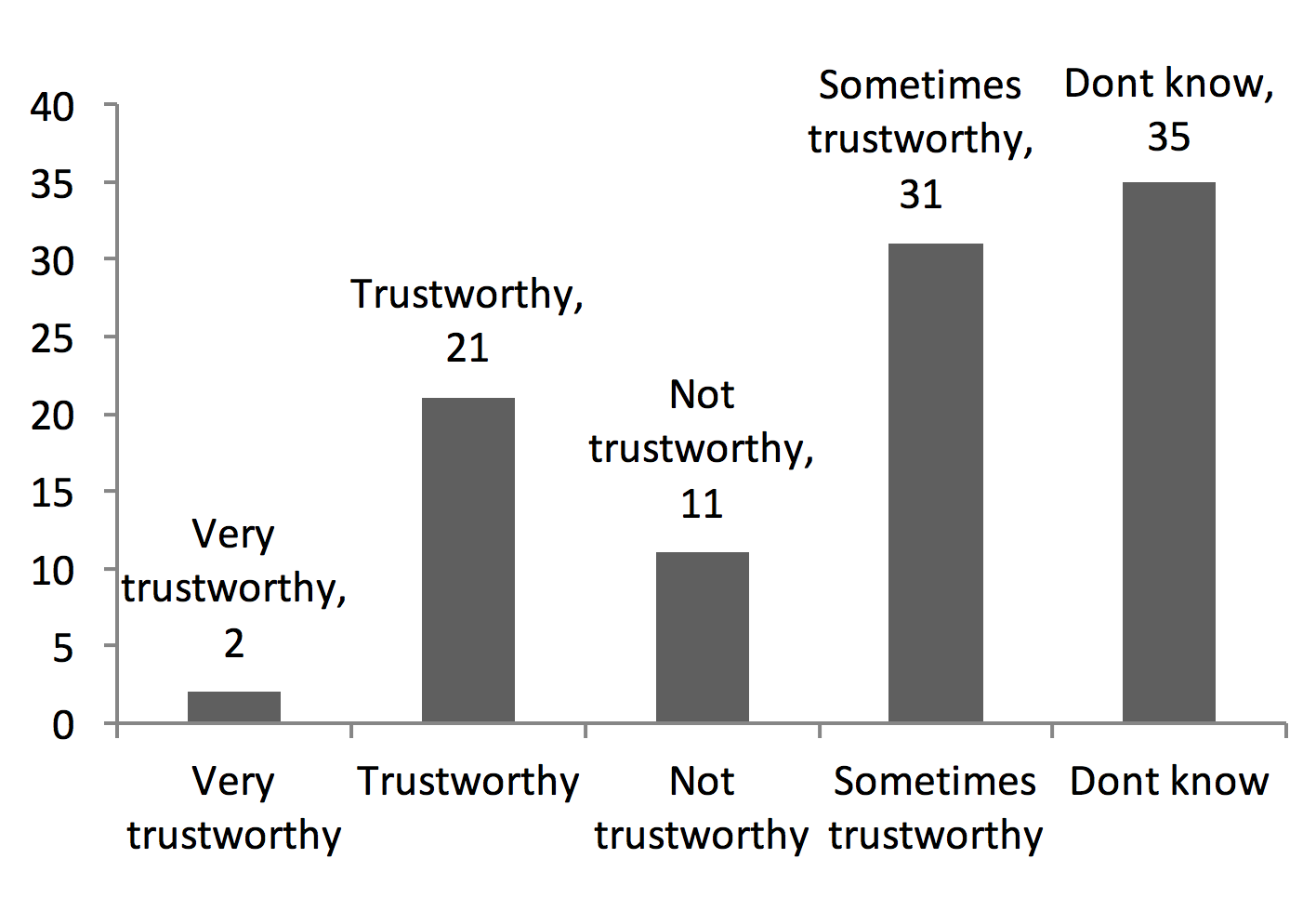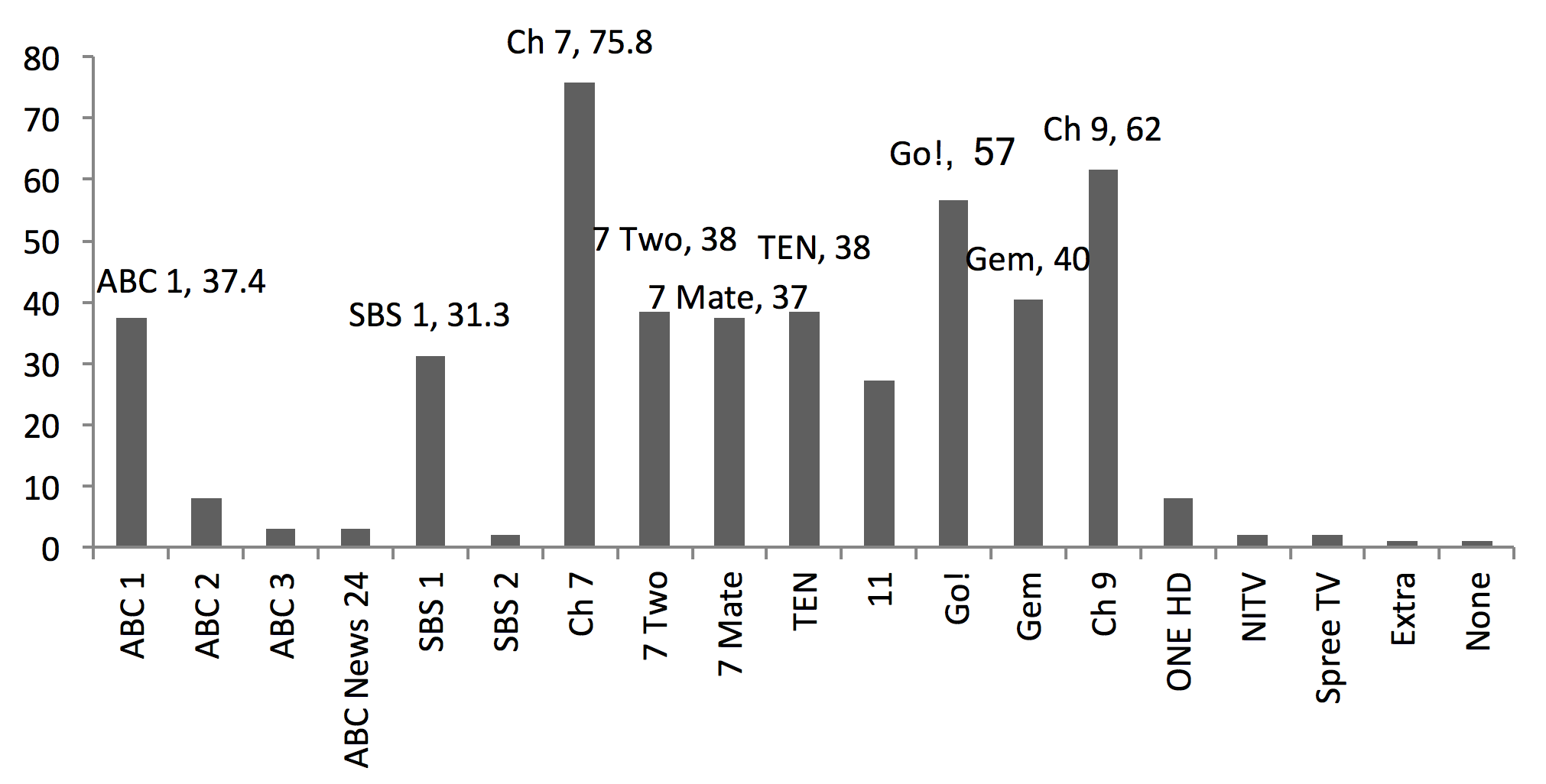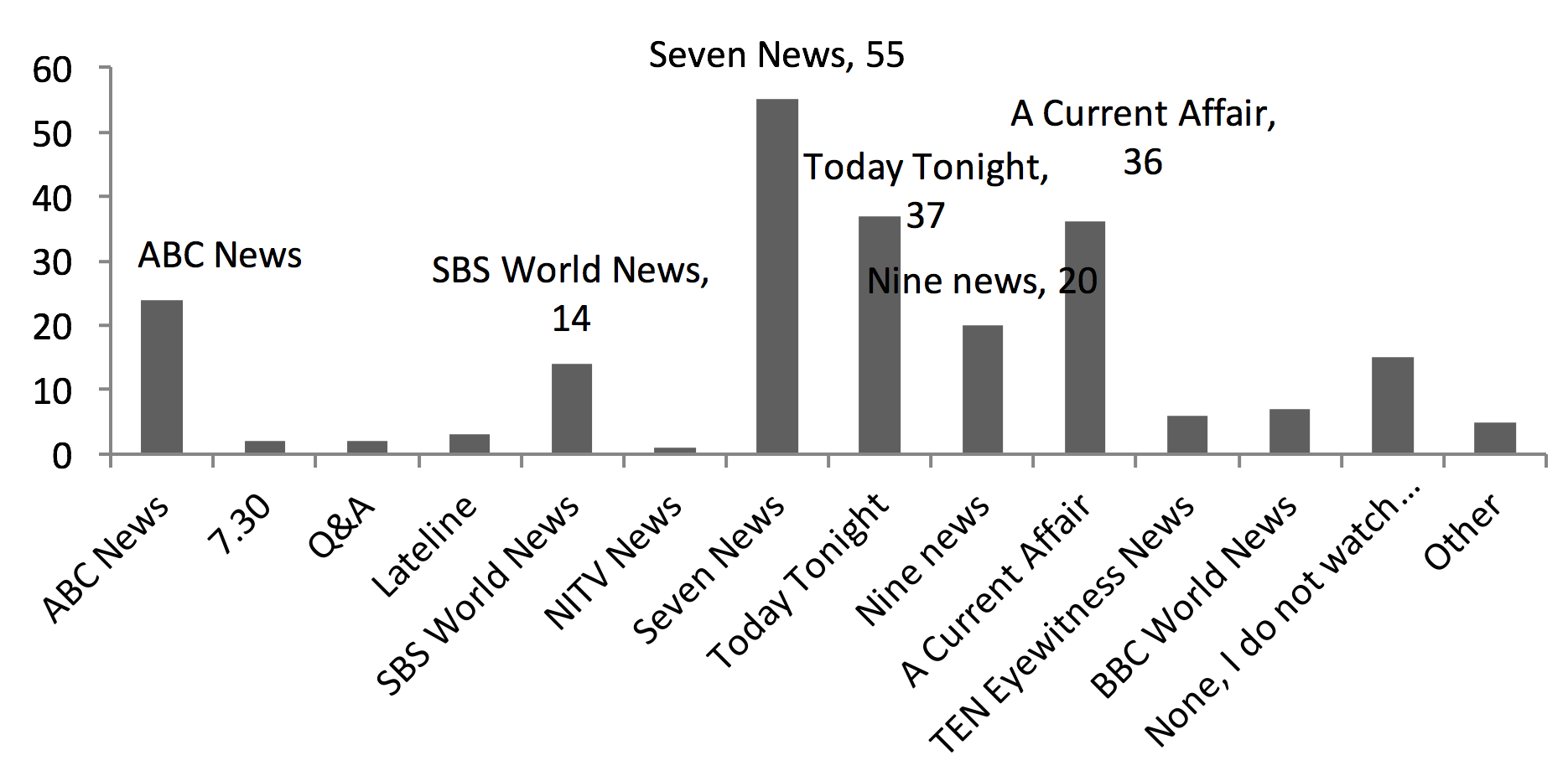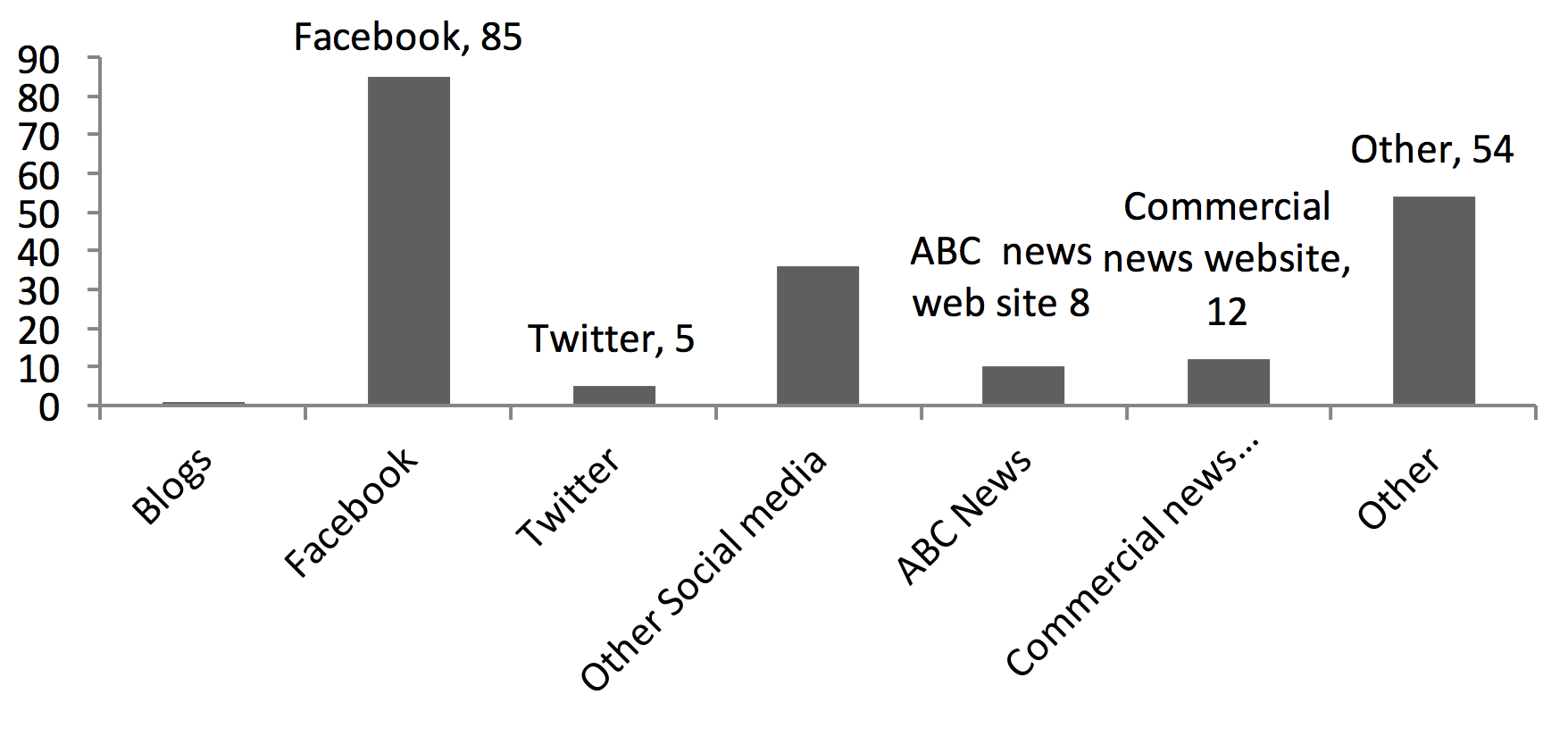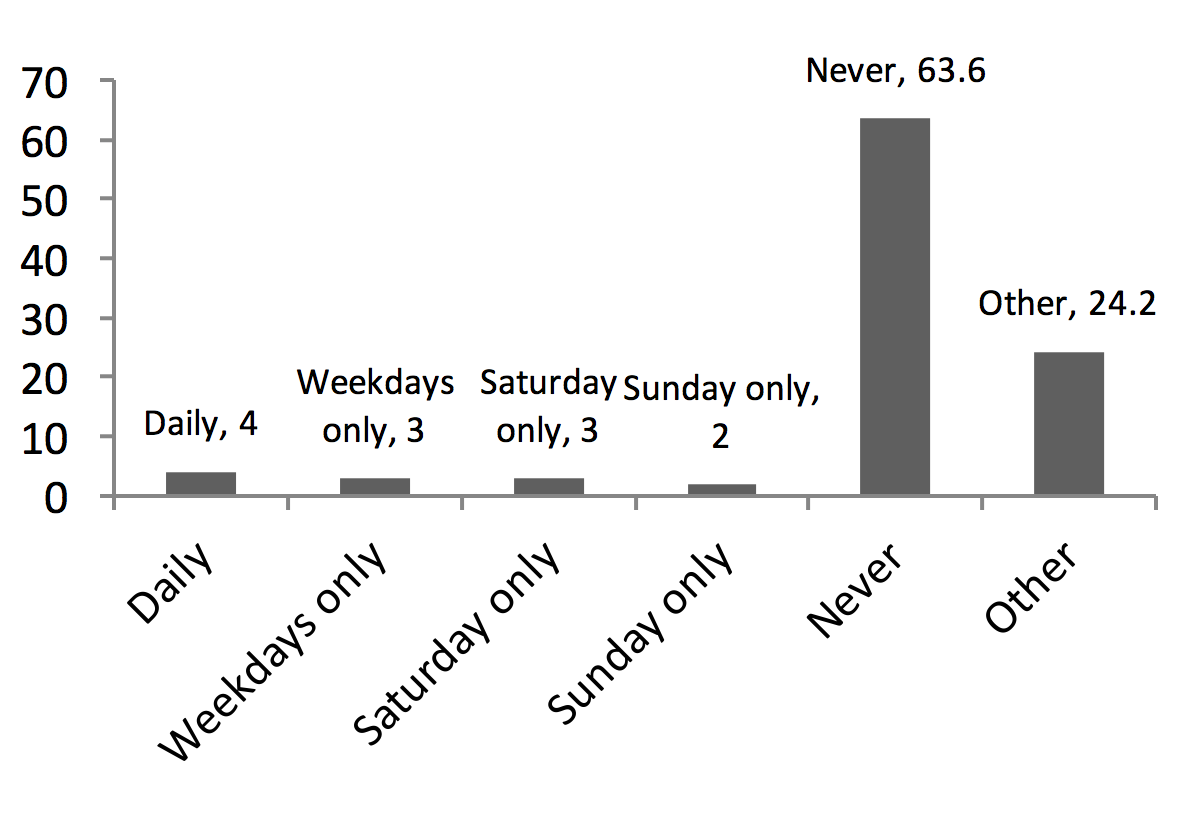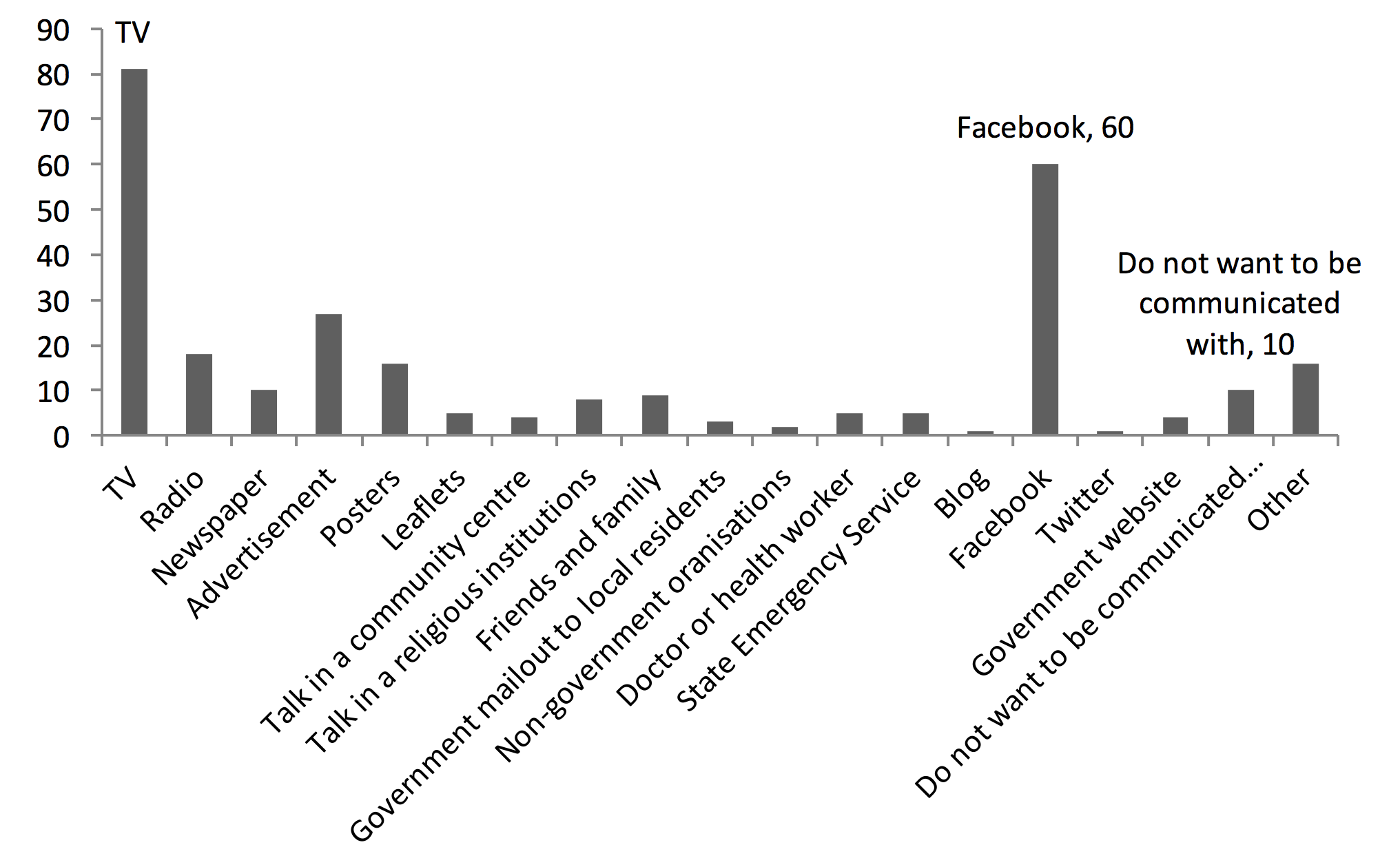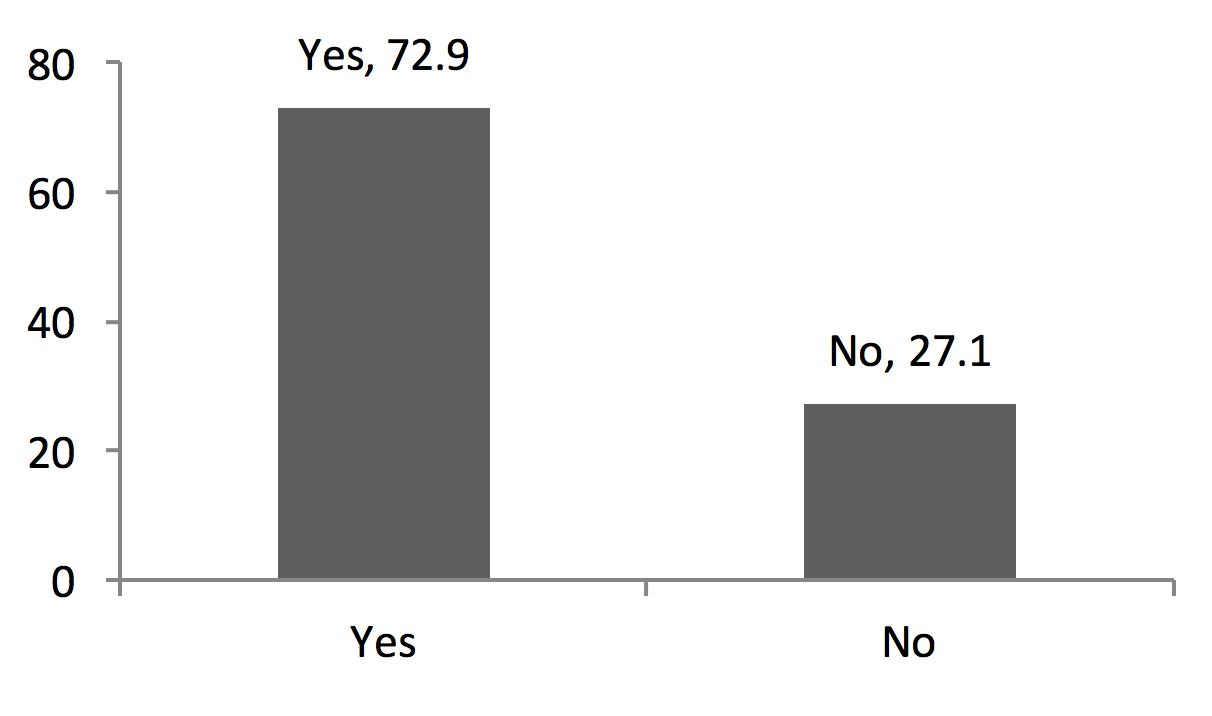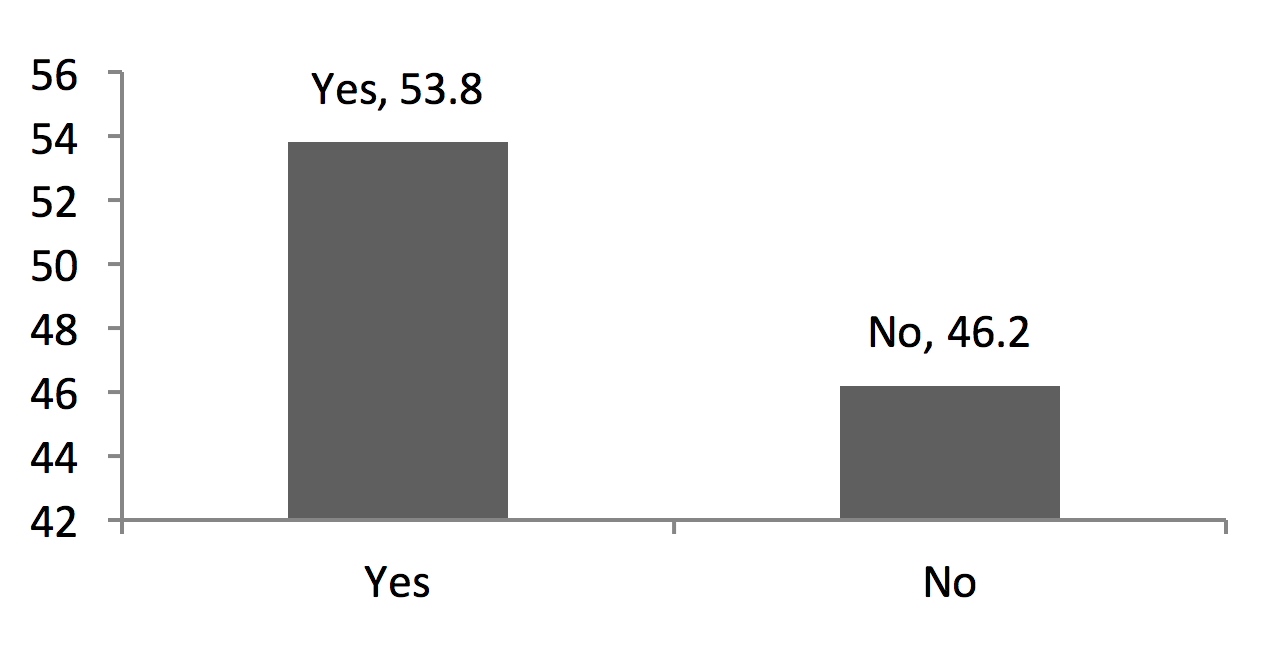Media preferences, low trust and seasonal adjustment: Communicating climate change adaptation to vulnerable, low socioeconomic groups in Adelaide
Robert Palmer
University of Adelaide
Kathryn Bowd
University of Adelaide
Mary Griffiths
University of Adelaide
Abstract
Communicating the need for climate change adaptation has been described as an urgent global and national challenge. However, there is limited understanding of how to communicate this issue to people from low socioeconomic, urban groups in developed nations. This paper discusses findings from an investigation into the challenges of communicating climate change adaptation to such groups in Adelaide, Australia. Survey data collected from 110 participants living below the poverty line in suburban Adelaide indicates that the media logic employed by state climate change adaptation planners targeting this group may need reconsideration and that the present approaches used are in danger of having unintended consequences. Amendments are required in part due to very low levels of trust in democratic institutions charged with communicating climate change adaptation to society. The survey results also suggest that media consumption in this group is largely confined to commercial television and Facebook and that seasonal factors may be an important consideration when designing communications specifically for vulnerable groups in urban Adelaide.
Introduction
In January 2014, the population of Adelaide, Australia, experienced an extreme heatwave. On January 16, 2014, Adelaide was declared the hottest city on Earth by the United Nations World Meteorological Organisation (Milman, 2014), and by the end of the heatwave, 275 people had been admitted to hospitals with heat stress related conditions (Rice, Crouch, & Nankervis, 2014). Heatwaves have killed more Australians than all other natural hazards combined (Middelmann, 2007) and climate change has been attributed to an increase in heatwaves in Adelaide where they are becoming more frequent and intense (Steffen, Hughes, & Perkins, 2014, p. 9).
The increase in frequency and intensity of heatwaves in Adelaide has resulted in academic investigations to identify who is most at risk and how they can adapt to a changing climate. In particular, the National Climate Change Adaptation Research Facility based at Griffith University in Queensland, has conducted extensive national research to see who in Australia is most vulnerable to changing climatic conditions and why. The results of these investigations have shown that economic disadvantage and people living with multiple vulnerabilities, (including sub-standard housing, low educational standards, the aged, and people with existing health problems such as type 2 diabetes), are more vulnerable to the impacts of climate change than those with good health, higher standards of housing and bigger incomes (Barnett et al., 2013; Hanson-Easey et al., 2013; Loughnan, et al., 2013; Sevoyan et al., 2013). However, understanding about how vulnerable people can adapt in urban centres is limited (Moser & Satterthwaite, 2008) as too is our knowledge of how to communicate climate change adaptation to such groups in a developed nation (Dodman, 2013).
Consequently, communicating with vulnerable groups about the need to adapt has been described as an urgent and challenging endeavour for communicators (Heinrichs, 2010; Moser, 2014). Although the study of climate change communications has been described as ‘somewhat of a booming industry’ (Nerlich & Brown, 2010), there has been no research utilising media theory to identify possible communicative responses by adaptation planners targeting vulnerable people in Adelaide, nor elsewhere in Australian cities with large concentrations of people from low socioeconomic backgrounds (Barnett et al., 2013). This article presents findings from a survey that is part of mixed method research that investigates mediatization theory and its utility in the design of holistic adaptation communications that target such groups in Adelaide. Drawing from Hepp, Hjarvard and Lundby, the research examines media-centred holistic approaches to communications and the “interplay between media, communications, culture, and society in different sectors of culture and society” (Hepp, Hjarvard, & Lundby, 2015, p. 315). There is no space in this paper to discuss the project in its entirety. Instead, we provide a brief background to it, and then focus on the method used for survey design; discussion of the findings focuses on the survey component of the research. Due to the rudimentary nature of current studies of climate change adaptation communications with low socioeconomic groups in Adelaide, and other Australian cities, this paper discusses survey findings relating to levels of trust in the democratic institutions charged with communicating adaptation, media consumption habits, preferences and patterns.
Results suggest that adaptation planners may find it very difficult to communicate successfully with people from vulnerable, low socioeconomic groups in Adelaide about climate change adaptation. Analysis suggests that existing efforts to communicate adaptation are not, and may not help vulnerable people adapt to climate change. This is in part, due to very low levels of trust in the democratic institutions charged with helping them adapt to climate change. An approach based on a seasonal use of media could provide democratic institutions with an opportunity to communicate with vulnerable groups and help them adapt in the long-term to the impacts of a changing climate in Adelaide.
Background to the project
The media landscape has never been so vibrant, with a plethora of sources for people to consume. This is primarily due to the internet which has fundamentally changed the media landscape. In addition to traditional media, there appears to be a limitless supply of opportunities for information to be disseminated either at a broad level or more targeted at niche interests through blogs, Facebook, YouTube, Twitter and other online sources (Deacon & Stanyer, 2014; Nie & Ahmad, 2014). Couldry and Markham (2006, p. 256) argue that this expansion could result in an “intense interlinking” of media between the old and new and that people would increasingly adapt their consumption to suit their particular interests. With that diversity in mind, the overarching research project asks how the key democratic institutions are communicating climate change adaptation in Adelaide and questions whether their approaches will help people from vulnerable groups in Adelaide adapt to climate change over the long-term.
Wider research is ongoing that explains the impact the expansion in media sources is having on society, and mediatization theory is increasingly being utilised to analyse its reach and influence. This has included conducting mediatization research in the world of sport (Frandsen, 2015), political science (Moffitt & Tormey, 2014), religious studies (Morgan, 2011) and commerce (Rawolle, 2005). However, to date, mediatization theory has not been used in the context of describing how democratic institutions interact with the media over the long-term to help people from vulnerable backgrounds in Adelaide (or elsewhere) learn about the need to adapt to climate change. Evidence from other climate change adaptation research conducted in South Australia suggests that the interactions have not been reaching vulnerable groups; Sevoyan et al. (2013, p. 3) conclude that ‘existing sources of information to help people adapt to climate change were largely not effective in getting through to disadvantaged groups’ in Adelaide, and South Australia more generally.
Therefore, this project aims to contribute to the area of media and communications research in climate vulnerable low socioeconomic groups in Adelaide and more broadly in other urban areas which share similar demographics. To do so, the project has obtained information from such people directly about their media and communication consumption habits and use patterns. There is minimal data available in the existing literature that explores in any detail information from such people about media consumption, viewing and listening patterns. There is no data on the use of new media such as Facebook or Twitter to access information about climate change adaptation. Also, there is limited information that shows how democratic institutions responsible for communicating climate change adaptation in Adelaide are targeting specific groups in society. With such limited information available, it is hard to determine if mediated messages produced by institutions charged with communicating adaptation are having any impact on vulnerable groups.
This project therefore aims to contribute to an understanding of whether mediated messages are having an impact, and if so, how. This is because the climate is not predicted to simply change and then stabilise into a new manageable form. Change will be ongoing, the need to adapt will be continual and people from low socioeconomic groups are predicted to bear the brunt, even in developed nations, in the decades ahead (Intergovernmental Panel on Climate Change (WGII), 2014).
Method
Mixed method research was adopted for the overarching project. Empirical data was required to help build knowledge of media consumption habits and patterns of use by people from low socioeconomic, vulnerable groups in Adelaide. Qualitative data was needed to construct a picture of why democratic institutions charged with communicating climate change adaptation have selected the methods that they have. To understand that logic, semi structured interviews were conducted with professionals who work in, or who would be expected to have knowledge of, the climate change adaptation communication field. There is no space in this paper to discuss the interview data in detail or to how that information collected for the empirical survey contrasts with the responses provided by the interviewees. However, the method for the overarching project has been mentioned in this paper because one area of the findings from that data set is raised below in the discussion section headed ‘A communicative disjuncture’ of this paper.
Consequently, for this paper, only the application and results of the survey are described in detail. A survey was selected as the appropriate research tool because of its utility in collecting broad information about a particular topic from a select target group (Clough & Nutbrown, 2002). Surveys have a longstanding tradition in media research studies because they are a useful tool for collecting large amounts of data in a relatively short amount of time (Anderson, 2012; Berger, 2014; Clough & Nutbrown, 2002).
Adelaide was selected as the location for the survey because it is one of the hottest cities in the ‘driest state in the driest habited continent in the world’ (Bawden, 2009, p. 8). Adelaide is also recognised as being home to large concentrations of people living in economic disadvantage who are vulnerable to extreme heat and the impacts of a changing climate (Barnett et al., 2013; Hansen et al., 2008; Hansen et al., 2015). This is especially the case in the northern and southern suburbs of Adelaide (Sevoyan et al., 2013). For our research, we therefore focused on conducting the survey in those climate-vulnerable areas of Adelaide and participants were selected based on their level of economic disadvantage.
Selection of participants was based on methods used in two previous climate change adaptation studies conducted in Adelaide. The first was Sevoyan et al. (2013, p.1) who studied the “relationship between climate change impact and social disadvantage”. In that report conducted for the National Climate Change Adaptation Research Facility (NCCARF), the authors utilised the 2011 Australian Bureau of Statistics (ABS) census data to measure social exclusion and described low income households as those with an income of less than $600 per week. In a second NCCARF study, Barnett et al. (2013) conducted a climate change vulnerability assessment of people living in social housing in Adelaide, Melbourne, Brisbane and Sydney. They classified vulnerable people in their study as earning between $1-399 per week. Adelaide was found to have the highest concentration of the four cities studied of those in that income bracket living in the north-western and southern suburbs (they found Adelaide had 28 percent, Brisbane 22 percent, Sydney 23 percent and Melbourne 24 percent of all households had incomes between $1-399 per week in the Census Collection Districts as of 2006). We do not suggest that people living with economic disadvantage are the only people in society susceptible to the impacts of climate change. However, the two research papers described above show that those in Adelaide most vulnerable to the impacts of climate change will be living with economic disadvantage and are less likely to have the economic resilience to be able to fund responses such as turning on air conditioners during periods of extreme summer heat.
Therefore, we selected participants if they self-identified as living below the poverty line. This builds on the methods used in the two previous studies conducted in Adelaide and targets people who are likely to be living in sub-standard housing, (or have no home at all) and have limited economic scope to protect themselves or their families from extreme heat events. The Melbourne Institute of Applied Economic and Social Research (MIAESR) publishes quarterly reports which describe income levels based against household characteristics to establish if a person is living below the poverty line. We drew from the December 2014 MIAESR data and Table 1 shows the statistics used at the time of the survey to select participants.
| Income Unit | Including Housing $ per week |
| Head in workforce | |
| Couple | 673.82 |
| Couple plus 2 | 946.11 |
| Single person | 503.71 |
| Single parent plus 2 | 782.72 |
| Head not in workforce | |
| Couple | 578.55 |
| Couple plus 2 | 850.84 |
| Single person | 408.44 |
| Single person plus 2 | 687.44 |
Table 1: Poverty Lines Australia: December Quarter
(Melbourne Institute of Applied Economics, 2013).
Data collection points were established at key social locations in Elizabeth, Salisbury and Port Adelaide in the northern suburbs of Adelaide. In the south, Noarlunga and Christies Beach were selected. Map 1 highlights the approximate location of these suburbs in relation to central Adelaide. Potential participants were randomly approached at these locations and, if they self-identified with the characteristics outlined in the sample selection tool above, were invited to participate.
Map 1: A Google Heat Map showing the approximate location of data collection points in suburban Adelaide.
The survey consisted of 42 questions that extrapolated data about awareness levels of climate change and adaptation, media consumption habits, trust levels in the societal institutions that are or will in the future play a role in helping people adapt to climate change and preferred choice of media sources for information about climate change adaptation. Questions were also asked about the level of awareness that participants had in state and local government climate change adaptation planning endeavours. Questions were a mix of Likert scales, open ended and multiple choice. The survey was administered on an iPad by the first author of this paper at the data collection points described above. The data was entered offline into Survey Gizmo and the empirical analysis was conducted with that software.
Although the process of data collection was challenging (it is emotionally challenging to be asked if one is living below the poverty line, and to ask the question) a total of 110 people agreed to participate in the survey which was conducted over two time periods; the first in the height of summer between the days of February 18 to March 2, 2015; the second in mid-winter from July 27 to July 31, 2015. After the first round of analysis, ten results were excluded from further analysis in an effort to ensure the results were as reflective of the target communities as possible. The analysis of the postcode data showed that ten of the participants were not living in the target areas. Therefore, in an effort to be thorough, those responses were removed to make sure the results were a good record of respondents who are living in the target communities of this study.
Analysis of the survey resulted in four key findings and the following section presents those results.
Finding 1: A not-so-booming industry
As described above, a key objective of the survey was to uncover awareness levels of climate change adaptation and media consumptive behaviour within the target group. As Boykoff (2014) notes, we are operating in a ‘dynamic period’ in the evolution of the climate change communication field which is having a profound impact on the development of adaptation communications theory. The communication of the science of climate change and the need for emission mitigation has been the focus of many studies that examine the interface between science, disaster and risk communications, public opinion formation theory, policy development, framing, campaign analysis and media analysis to name a few (Bostrom, Böhm, & O’Connor, 2013; Boykoff & Boykoff, 2007; Byer, 2009; Catapano, 2001; Chongkolrattanaporn, 2013; Harvey et al., 2012; Moser, 2010; Solomon et al., 2012; Weingart, Engles, & Pansegrau, 2000). These studies have resulted in the field being described ‘as something like a booming industry alongside more established ‘communication enterprises’, such as health, risk and science communication’ (Nerlich et al., 2010, p. 1).
Similarly, the climate change adaptation communications field has become something like a booming industry with many strategies, frameworks and theoretical concepts suggested as a way to communicate the issue (Agyeman et al., 2007; Fünfgeld, 2012; Hanson-Easey et al., 2013; Heinrichs, 2010; Intergovernmental Panel on Climate Change, 2014; Intergovernmental Panel on Climate Change (WGII), 2014; Moser, 2014; Ungar, 2007). Collectively, these authors suggest that the principal theory of communicating adaptation should be consistent with that of communicating mitigation and the science of climate change; which is to avoid using a frame of impending doom and be sparse with the information deficit model (IDM) (Waschka & Torok, 2013). Researchers argue that adaptation should be presented in a way that localises the issue into a context that target audiences can more easily relate to and that the messaging must present credible and salient arguments with efficacious possibilities (Hanson-Easey et al., 2013; Intergovernmental Panel on Climate Change (WGII), 2014; Moser, 2014; Moser & Dilling, 2007; Ungar, 2007).
Survey participants were questioned on the theoretical argument that communications should avoid the frame of impending doom. This was done by asking how likely they would be to source further information about climate change adaptation based on whether the framing was one of impending doom or presented with a more positive tone. Participants were read two statements (imposing against positive) and based on what they heard, asked to rank on a scale of one-to-five (five means they would seek more information urgently) how likely they were to react to that message and seek out further information about climate change adaptation.
Statement 1 read:
Adapting to climate change will create a more liveable community where you and your family will be happy, healthy and safe reducing the impacts of climate change.
Statement 2 read:
Climate change is predicted to have a big impact on people from low socioeconomic areas. People could suffer serious illness or even death unless people take urgent action to adapt to these changes.
Results shows that the more imposing frame yielded a slightly stronger response than that framed in more positive tones. It was found that 51.5 percent of people who ranked a score of 3 for the more negative framed statement, compared with 40.4 percent for the more positive framing.
However, although participants indicated a willingness to source further information about climate change adaptation, this sample had limited knowledge of it as a concept. Only 9.9 percent of respondents had knowledge of adaptation as a component of the climate change debate. This is compared to 99 percent saying they had heard of climate change itself. From a localised perspective, this finding is extremely important because South Australia is described as a leader in the adaptation planning process. South Australia has a national award-winning climate change adaptation plan in the implementation phase (Government of South Australia, 2012), but those surveyed had no knowledge that their state government is perceived as leading the way in the field. Further, the City of Onkaparinga (a local government area where participants were surveyed), also received a national award for their Resilient South planning process (City of Onkaparinga, 2014b) which is described as a ‘benchmark for local government response to climate change’ (City of Onkaparinga, 2014a).
Just two percent of respondents knew of the state plan and only three percent said they could identify other planning processes such as the one developed by the City of Onkaparinga. However, when open ended responses are factored in, it was evident that the participants were confusing adaptation plans with other specific climate change policy areas. For example, one participant identified an adaptation plan as ‘the Clean Energy Supplement, I think’. Although the state government concludes that communications will help ‘underpin successful adaptation responses’ (Government of South Australia, 2012, p. 13), it appears that endeavours to inform a citizenry of the state and meso-level adaptation planning processes have failed to penetrate the minds of vulnerable people in low socioeconomic areas of Adelaide.
Finding 2: Lack of trust
One possible reason for the lack of participant awareness about state and local plans, could be the very low levels of trust that survey participants relayed when asked about the societal institutions charged with mediatizing adaptation. For example, participants expressed extremely low levels of trust in the federal government. Very low levels of trust were also identified in the state and local tiers of governments. Figures 1 to 3 present these findings.
Figure 1: Trust levels in local government
Figure 2: Trust levels in state government
Figure 3: Trust levels in federal government
Other institutions participating in the process of adaptation policy development and implementation fared little better. For example, Figure 4 shows that the State Emergency Service (SES) would only be trusted by 29 percent of respondents. However, the participants did not seem to know what role the SES could play in climate change adaptation.
Figure 4: Trust levels in the State Emergency Service
This finding is consistent with participant trust levels in non-government organisations (NGOs) (Figure 5) who were not considered to be particularly trustworthy either. However, as with the SES, participants do not really understand the role that NGOs could play in climate change adaptation.
Figure 5: Trust levels in NGOs
Finding 3: Consistent consumption habits in the traditional and new media
While participants showed very little engagement with the institutions charged with communicating climate change adaptation, they were much more engaged with media as a source of information. Participants had highly consistent media consumption habits in traditional and new media sources. 76 percent of the participants said they obtained information from free-to-air Channel 7 (Ch 7) and the preferred viewing time for 85 percent of respondents was between 4pm and 9pm. Figure 6 shows the television channels the respondents say they regularly watch to source information.
Figure 6: Television sources of information
When asked about news and current affairs, participant consumption habits were reflected in the channels that they regularly sourced information from. Figure 7 below shows that commercial news and current affair sources are by far the most popular and those in the sample indicated they are engaging with news and current affairs on a regular basis. This point is reflected below in the discussion.
Figure 7: News and current affairs viewing habits
Of equally high consistency was the preferred choice of online information sources. 83.7 percent of participants said they regularly went online to source information and of those, 84.5 percent said Facebook was their preferred information access point. Figure 8 shows the types of online sources used by the participants to source information. From the “Other” category, the most popular sources of information were YouTube (14 percent) and the Google search engine (9 percent).
Figure 8: Preferred online sources of information
Respondents were also asked about their interaction with other information sources including with radio and print media. 59.2 percent of respondents said they do not listen to the radio. Figure 9 shows newspaper consumption habits, with 63.6 percent of participants saying they never read a newspaper (hard copy). Only four percent said they read one daily.
Figure 9: Newspaper consumption habits
When asked about preferred sources of information for climate change adaptation, participant choices mirrored media consumption habits. Figure 10 below shows the preferred sources, with 81 percent saying television and 60 percent Facebook being their preferred information sources. Only 10 percent said they were not interested in being communicated with about climate change adaptation.
Figure 10: Preferred information sources for information about climate change adaptation
Finding 4: Seasonality matters
When asked about whether climate change adaptation was considered an emergency issue for people from low socioeconomic backgrounds to respond to, results show less consistency than for answers about media consumption habits and preferences. Collectively, 65.3 percent of participants agreed with the statement that climate change adaptation is an emergency for vulnerable groups. However, this is only half the story. As mentioned above, the survey was conducted during two contrasting times of the year. The first part of the survey was conducted in the height of summer and the second in mid-winter. Results show that from a seasonality perspective, the sample displayed a significant variation in their stated level of concern over their need to adapt to climate change.
During the first data collection period, the days were long and at times stifling hot. On some days, the survey was conducted in temperatures at or above 40°C in semi-heatwave conditions (which in Adelaide is defined as five consecutive days over 35° or three over 40°). Figure 11 below shows that of those surveyed in that weather, 73 percent of respondents viewed adapting to climate change as an emergency for people from low socioeconomic backgrounds.
Figure 11: Respondents who viewed adapting to climate change as an emergency during data collection phase one between February 18 and March 2, 2015.
In contrast, the second data collection period was during the winter in July with temperatures in the low-to-mid teens. In those more comfortable conditions, Figure 12 shows that only 54 percent of respondents viewed climate change adaptation as an emergency.
Figure 12: Respondents who viewed adapting to climate change as an emergency during data collection phase two between July 27 and July 31, 2015.
Discussion
A communicative disjuncture?
Cumulatively, the survey results presented here pose a climate change adaptation communicative disjuncture in Adelaide. The media logic implemented by the state government for their award-winning adaptation plan was to delegate responsibility to a local government level (Government of South Australia, 2012). By doing so, it could be argued that the state government is saying that they are not the most effective source of communication about adaptation to South Australians, but on the other hand, moving the issue into the hands of another tier of government may not be the most appropriate solution for lower socio-economic groups in Adelaide.
Each local government area has been charged by the state government with producing a plan addressing adaptation issues at a meso-level. Given the people likely to be the most vulnerable to the impacts of climate change in Adelaide will share similar characteristics to those who participated in the survey, this could be constructed as a communicative miscalculation. Survey results suggest that with such little trust in institutions, the likelihood of this vulnerable sample paying attention to media from such sources is low. We do not argue that just because this group shows no trust in democratic institutions then the entire media logic is flawed. Instead, this paper argues that the miscalculation lies in the fact that given such a clearly defined target audience is the most vulnerable to climate change impacts, alternative logics could be factored in. The implementation of a one-size-fits-all media logic where institutions try and target communications with as broad an audience as possible might mean that those most in need could miss out on important messaging because they are not listening. This may mean that those who are not in need might hear the message, but those who are, will not.
Therefore, results suggest that with such little trust in democratic institutions, the media interactions deployed with such logic are likely to yield little social or cultural influence over time. There is also the possibility that the opposite might occur with unintended negative consequences. Interactions could result in a negative feedback loop, where vulnerable citizens might become immune to adaptation messaging if it is continually generated by un-trusted sources. Resolving the communicative disjuncture described here constitutes an important part of future research when considering solutions to the complex relationship issues identified in the survey.
A seasonal approach
Results show that seasonal impacts influenced and changed participant constructions of climate change adaptation. When the pressure of extreme heat is reduced, climate change adaptation may be seen as less of an emergency. This implies that any holistic approach to communicating adaptation to this group might have to exploit media norms and be conducted at specific times of the year. Given the fact that “the media plays a powerful role in people’s lives by informing, raising awareness and shaping public attitudes” (Wolfinger, 2015), institutions could consider utilising media to exploit extreme weather events to connect with this group in Adelaide. However, as noted by Wolfinger (2015, p. 4), this will be no easy task because:
… highly politicised issues are likely to reflect the ideas of dominant (powerful) groups in society, leaving other (less powerful) groups at risk of stereotyping and devaluing by the media.
As climate change is a highly politicised issue, the impact of the dynamic described by Wolfinger could be that adaptation media is avoided and institutions that could have influence over vulnerable groups refuse to engage with the media regarding this issue.
A second theme raised in media studies and relevant to this discussion is that communicating through the media, targeting such groups in society, is unlikely to yield results at any time. A discourse has persisted which says those who interact primarily through the mass media, especially television, are likely to be a ‘passivised, individualistic, mindless mass audience’ (Couldry, Livingstone, & Markham, 2010). The apathy described is based on the assumption that interactions through the mass media have been destructive to democratic engagement between citizens and institutions (Lippmann, 1922; Putnam, 2000; Schudson, 2008; Whipple, 2004).
Therefore, based on the survey data presented here, the engagement with free-to-air mass media in the television could indicate that this group are passivised and unlikely to respond to mediated messages about climate change adaptation. However, from the data presented here, one can suggest that far from being a disengaged passivised audience, this sample is engaging with social issues on a regular basis through media sources. A majority of this sample are tuning in regularly to engage with current affairs and such interactions might have an influence on views, opinions and responses to social issues. Such engagement may suggest that mass media could have power, reach and influence in this group of people. Couldry and Markham (2006) said if ‘people are facing the other way, then no amount of skilled political communication will reach them’ (Couldry & Markham 2006, p. 256). The data from this research suggests that although the participants are vulnerable on multiple levels, they are still facing the right way and are engaging regularly with the media which provides a justification for institutional engagement with such sources over time.
This point is demonstrated by one of the survey results above (see Finding 1) which indicates a willingness to seek further information. Further, when this group is informed through messaging and presented with information that climate change adaptation is an issue that people from low socioeconomic backgrounds need to know about, there was a desire to find out more. It could be argued that the mere act of conducting the survey had put the issue front and centre in the mind of a participant in the way a marketer might use a push-poll to influence the views and opinions of an individual. However, it can also be said that the fact that people from this grouping were prepared to stop when going about their daily affairs and undertake a survey with a complete stranger about climate change adaptation could imply a willingness to respond to mediated messages. Further research about how to frame adaptation with this vulnerable group is required.
Conclusion
This paper suggests that due to low levels of trust in democratic institutions, people who are vulnerable to the impacts of climate change may be difficult to communicate with about climate change adaptation. This is compounded by the media logic used by democratic institutions to engage with people in Adelaide, (and South Australia more broadly), which could have unintended consequences. Our data analysis suggests that the existing efforts to communicate adaptation are unlikely to be helping those most vulnerable to the impacts of climate change learn about adaptation. Results also suggest that far from being disengaged, this group is paying attention to social issues on a regular basis. This engagement is occurring in both the old and the new media and seasonal weather events could be exploited when communicating through the media with this group. This paper has presented information about media and communication consumption habits that could be used in future media and communication endeavours, and utilised to inform communication planning in relation to climate change adaptation and vulnerable demographic groups in Australia and possibly other developed nations. Finally, the authors suggest that other groups within society may also be impacted by the present media logic adopted by democratic institutions charged with communicating adaptation. However, this is only a suggestion and further research would be required to examine if this is, or is not, the case.
References
Agyeman, J., Doppelt, B., Lynn, K., & Hatic, H. (2007). The climate-justice link: Communicating risk with low-income and minority audiences. In S. Moser & L. Dilling (Eds.), Creating a climate for change: Communicating climate change and facilitating social change (pp. 119-138). Cambridge, England: Cambridge University Press.
Anderson, J. (2012). Media research methods: Understanding metric and interpretive approaches. Thousand Oakes: SAGE.
Barnett, G., Beaty, R., Chen, D., McFallan, S., Meyers, J., Nguyen, M., Wang, X. (2013). Pathways to climate adapted and healthy low income housing. National Climate Adaptation Research Facility, Gold Coast.
Bawden, T. (2009). Water sensitive urban design technical manual for the greater Adelaide region. Australian Planner, 46(4), 8-9.
Berger, A. (2014). Media and communication research methods: An introduction to qualitative and quantitative approaches (3rd ed.). Thousand Oakes: SAGE.
Bostrom, A., Böhm, G., & O’Connor, R. E. (2013). Targeting and tailoring climate change communications. Wiley Interdisciplinary Reviews: Climate Change, 4(5), 447-455.
Boykoff, M. (2014). Media discourse on the climate slowdown. Nature Climate Change, 4(3), 156-158.
Boykoff, M., & Boykoff, J. (2007). Climate change and journalistic norms: A case-study of US mass-media coverage. Geoforum, 38(6), 1190-1204.
Byer, P. (2009). Addressing and communicating climate change and its uncertainties in project environmental impact assessments. Journal of Environmental Assessment Policy and Management, 11(1), 29-50.
Catapano, P. (2001). Trends in science communication today: Bridging the gap between theory and practice. Science Communication, 22(4), 438-441.
Chongkolrattanaporn, T. (2013). Global warming campaigns: Framing analysis and campaign effectiveness. (Doctor of Philosophy Ph.D), Macquarie University, Sydney, from http://hdl.handle.net/1959.14/285597, accessed July 11, 2014.
City of Onkaparinga. (2014a). Four SA councils win national award for action on climate change, from https://www.marion.sa.gov.au/webdata/resources/files/Local-Government-Champions-Award-Media-Relese.pdf, accessed November 23, 2015.
City of Onkaparinga. (2014b). Regional climate change adaptation plan, from http://onkaparingacity.com/onka/living_here/our_environment/resilient_south/project_outputs.js, accessed December 3, 2015.
Clough, P., & Nutbrown, C. (2002). A students’ guide to methodology. London: SAGE.
Couldry, N., Livingstone, S., & Markham, T. (2010). Media consumption and public engagement: Beyond the presumption of attention (Vol. 2): Palgrave Macmillan.
Couldry, N., & Markham, T. (2006). Public connection through media consumption: Between oversocialization and de-socialization? The ANNALS of the American Academy of Political and Social Science, 608(1), 251-269.
Deacon, D., & Stanyer, J. (2014). Mediatization: key concept or conceptual bandwagon? Media, Culture & Society, 36(7), 1032-1044.
Dodman, D. (2013). The challenge of adaptation that meets the needs of low-income urban dwellers. In J. Palutikof, S. Boulter, A. Ash, M. Stafford-Smith, M. Parry, M. Waschka, & D. Guitart (Eds.), Climate Adaptation Futures (pp. 227-234): John Wiley & Sons.
Frandsen, K. (2015). Sports organizations in a new wave of mediatization. Communication & Sport. 4(4), 385-400.
Fünfgeld, H. (2012). Local climate change adaptation planning: a guide for government policy and decision makers in Victoria, Available from http://www.vcccar.org.au/sites/default/files/publications/VCCCAR percent20Local percent20Climate percent20Change percent20Adaption percent20Planning-WEB.pdf.
Government of South Australia. (2012). Prospering in a changing climate: A climate change adaptation framework for South Australia.
Hansen, A., Bi, P., Nitschke, M., Ryan, P., Pisaniello, D., & Tucker, G. (2008). The effect of heat waves on mental health in a temperate Australian city. Environmental Health Perspectives, 116(10), 1369-1375, from http://www.ncbi.nlm.nih.gov/pmc/articles/PMC2569097/pdf/ehp-116-1369.pdf, accessed May 8, 2014.
Hansen, A., Bi, P., Pisaniello, D., Nitschke, M., Tucker, G., Newbury, J., . . . Kelsall, L. (2015). Heat-health behaviours of older people in two Australian states. Australasian Journal on Ageing, 34(1), E19-E25.
Hanson-Easey, S., Bi, P., Saniotis, A., Williams, S., Nitschke, M., Saniotis, A., Hodgetts, K. (2013). Public understanding of climate change and adaptation in South Australia.
Hanson-Easey, S., Bi, P., Saniotis, A, Nitschke, M., Benson, J., Tan, Y., Smyth, V., . . . Han, G.-S. (2013). Extreme heat and climate change: Adaptation in culturally and linguistically diverse (CALD) communities, National Climate Change Adaptation Research Facility.
Harvey, B., Ensor, J., Carlile, L., Garside, B., Patterson, Z., & Naess, L. O. (2012). Climate change communication and social learning–review and strategy development for CCAFS – CCAFS Working Paper No. 22, Available from http://www.ids.ac.uk/files/dmfile/ClimateChangeCommunicationandSocialLearning-ReviewandStrategyDevelopmentforCCAFS2.pdf, accessed May 23, 2014.
Heinrichs, H. (2010). Climate change and society: Communicating adaptation. In M. and H. Gross, (Eds.), Environmental sociology: European perspectives and interdisciplinary challenges (pp. 323-344): Springer Link.
Hepp, A., Hjarvard, S., & Lundby, K. (2015). Mediatization: theorizing the interplay between media, culture and society. Media, Culture & Society, 37(2), 314-324.
Intergovernmental Panel on Climate Change. (2014). Synthesis report: Longer report, from http://www.ipcc.ch/report/ar5/, accessed November 12, 2015.
Intergovernmental Panel on Climate Change (WGII). (2014). Climate change 2014: Impacts, adaptation, and vulnerability, from http://ipcc-wg2.gov/AR5/images/uploads/WGIIAR5-Chap25_FGDall.pdf, accessed December 6, 2015.
Lippmann, W. (1922). Public Opinion. New York: Harcourt, Brace and Company.
Loughnan, M., Tapper, N., Phan, T., Lynch, K., & McInnes, J. (2013). A spatial vulnerability analysis of urban populations during extreme heat events in Australian capital cities, National Climate Change Adaptation Research Facility.
Middelmann, M. (2007). Natural hazards in Australia: Identifying risk analysis requirements, from http://www.ga.gov.au/corporate_data/65444/65444.pdf, accessed November 24, 2015.
Milman, O. (2014, Jan 15). Adelaide heatwave: state capital is declared the hottest in the world. The Guardian, Retrieved from http://www.theguardian.com/world/2014/jan/16/adelaide-heatwave-could-break-all-records-pipping-461c-mark-set-in-1939.
Moffitt, B., & Tormey, S. (2014). Rethinking populism: Politics, mediatisation and political style. Political Studies, 62(2), 381-397.
Morgan, D. (2011). Mediation or mediatisation: The history of media in the study of religion. Culture and Religion, 12(2), 137-152.
Moser, C., & Satterthwaite, D. (2008). Towards pro-poor adaptation to climate change in the urban centres of low- and middle-income countries, Available from http://pubs.iied.org/pdfs/10564IIED.pdf.
Moser, S. (2010). Communicating climate change: history, challenges, process and future directions. Wiley Interdisciplinary Reviews: Climate Change, 1(1), 31-53.
Moser, S. (2014). Communicating adaptation to climate change: The art and science of public engagement when climate change comes home. Wiley Interdisciplinary Reviews.
Moser, S., & Dilling, L. (2007). Toward the social tipping point: creating a climate for change. In S. Moser & L. Dilling (Eds.), Creating a climate for change: Communicating climate change and facilitating social change (pp. 491-516). Cambridge: Cambridge University Press, from http://ebooks.cambridge.org/chapter.jsf?bid=CBO9780511535871&cid=CBO9780511535871A047&tabName=Chapter, accessed March 20, 2014.
Nerlich, B., Koteyko, N., & Brown, B. (2010). Theory and language of climate change communication. Wiley Interdisciplinary Reviews: Climate Change, 1(1), 97-110.
Nie, S., Kee, P., & Ahmad, A. (2014). Mediatization: A grand concept or contemporary approach? Procedia – Social and Behavioral Sciences, 155(0), 362-367.
Putnam, R. (2000). Bowling alone: The collapse and revival of American community. New York: Simon & Schuster.
Rawolle, S. (2005). Cross‐field effects and temporary social fields: a case study of the mediatization of recent Australian knowledge economy policies. Journal of Education Policy, 20(6), 705-724.
Rice, S., Crouch, B., & Nankervis, D. (2014, Jan 17). After South Australia’s five-day heatwave hospitalises 219 people, cool change has arrived. The Advertiser, from http://www.adelaidenow.com.au/news/south-australia/after-south-australias-fiveday-heatwave-hospitalises-219-people-cool-change-has-arrived/story-fnl1ee8j-1226803667585.
Schudson, M. (2008). The ‘Lippmann-Dewey debate’ and the invention of Walter Lippmann as an anti-democrat 1986-1996. International Journal of Communication, 2, 1031-1042.
Sevoyan, A., Hugo, G., Feist, H., Tan, G., McDougall, K., Tan, Y., & Spoehr, J. (2013). Impact of climate change on disadvantaged groups: Issues and interventions, National Climate Change Adaptation Research Facility.
Solomon, A., Ifeanyi, L., Ukonu, & Onyekachi, M. (2012). An analysis of the influence of the nigerian mass media on public understanding of climate change. Journal of Alternative Perspectives in the Social Sciences, 4(4), 688-710.
Steffen, W., Hughes, L., & Perkins, S. (2014). Heatwaves: Hotter, longer, more often. Retrieved from http://www.climatecouncil.org.au/uploads/9901f6614a2cac7b2b888f55b4dff9cc.pdf.
Ungar, S. (2007). Public scares: Changing the issue culture. In S. Moser & L. Dilling (Eds.), Creating a climate for change: Communicating climate change and facilitating social change (pp. 81-88). Cambridge: Cambridge University Press.
Waschka, M., & Torok, S. (2013). Communication of information for adaptation Climate Adaptation Futures (pp. 141-160): John Wiley & Sons.
Weingart, P., Engles, A., & Pansegrau, P. (2000). Risks of communication: discourses on climate change in science, politics, and the mass media. Public Understanding of Science, 9(3), 261-283.
Whipple, M. (2004). The Dewey-Lippmann debate today: Negotiating the divide between participatory and elitist models of democracy. Paper presented at the Annual Meeting of the American Sociological Association, San Francisco (August 2004). Available from http://escoladeredes.net/profiles/blogs/the-deweylippmann-debate-today.
Wolfinger, E. (2015). Australia’s welfare discourse and news: Presenting single mothers, Global Media Journal: Australia Edition, from http://www.hca.westernsydney.edu.au/gmjau/?p=1543.
About the authors
Robert Palmer is a media and communications professional who has run his own consultancy firm auc for over ten years. He is presently a Ph.D student in the discipline of media at the University of Adelaide. His thesis is provisionally titled Adapting communication conventions: Communicating climate change adaptation to Australia’s urban poor. Robert has worked in the climate change communications field providing expert communications support for NGOs, research and academic institutions. His work with vulnerable Australians has been influenced by his experiences of working on climate change adaptation projects with Indigenous Australians in remote and regional areas of the country.
Contact: robert.palmer@adelaide.edu.au, School of Humanities, Faculty of Arts, 906 Napier Building, University of Adelaide, AUSTRALIA 5005. https://www.researchgate.net/profile/Robert_Palmer21
Dr. Kathryn Bowd is a Senior Lecturer in the Department of Media, with a focus on teaching and research in journalism. She has 14 years experience as a journalism educator and researcher, and before that worked as a newspaper journalist in Australia and the UK for 17 years. Her Ph.D research focused on relationships and interactions between communities and local newspapers in regional areas of Australia, and her research interests include local/regional news media, professional practice in journalism and the impact of changing technologies on news media.
Contact: kathryn.bowd@adelaide.edu.au, School of Humanities, Faculty of Arts, 906 Napier Building, University of Adelaide, AUSTRALIA 5005, 08 8313 5617, http://www.adelaide.edu.au/directory/kathryn.bowd
Associate Professor Mary Griffiths has led the internationalisation of communications programs, and the development of the digital and participatory media degrees. She has research expertise in citizen empowerment, democratic participation and publics, and citizen-government engagement (i.e., the design of consultations on the digital economy and clean energy legislation) and is associate editor of Electronic Journal of E-Government since 2004. Her current research focuses on the making of deliberative publics in the context of responsive environments in smart cities.
Contact: mary.griffiths@adelaide.edu.au, School of Humanities, Faculty of Arts, 906 Napier Building, The University of Adelaide, AUSTRALIA 5005, 08 83134838, http://www.adelaide.edu.au/directory/mary.griffiths

